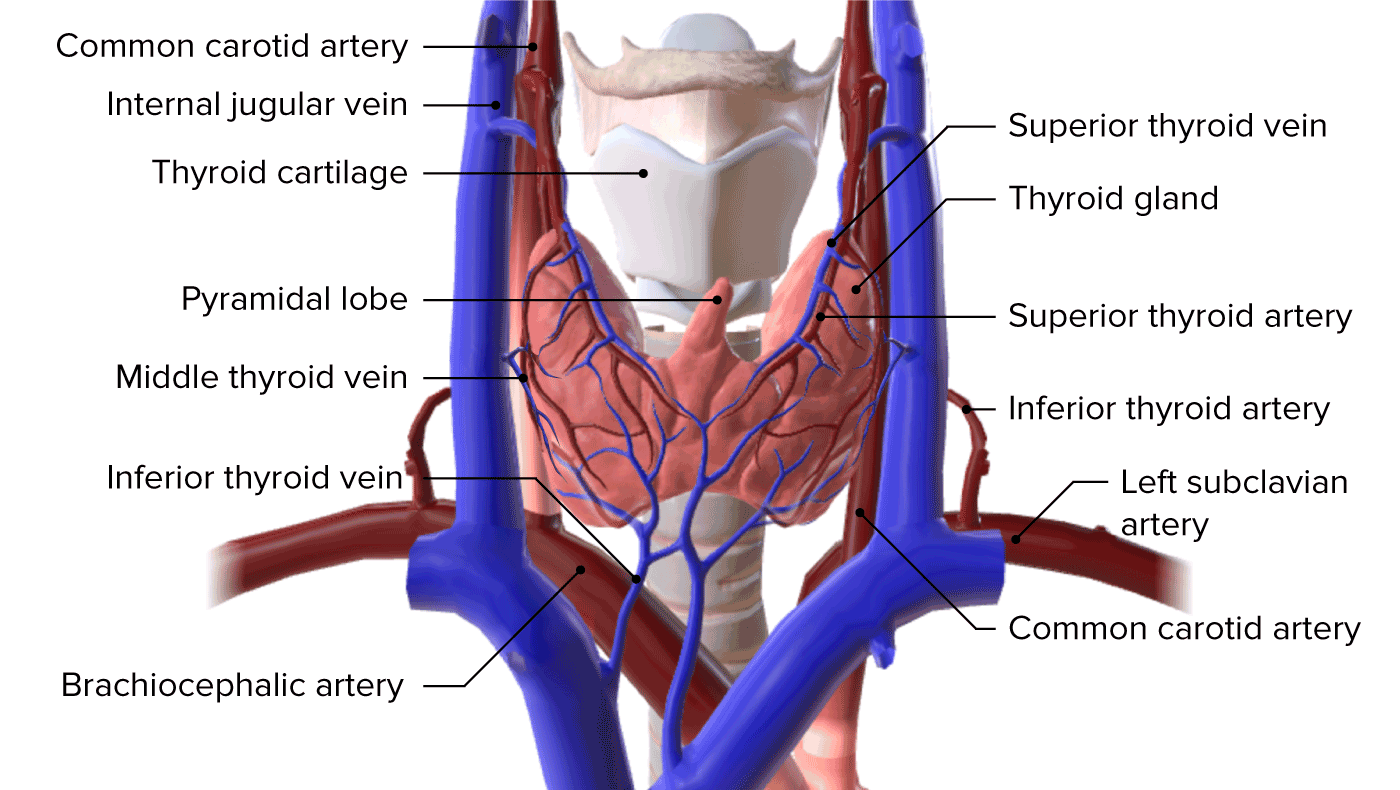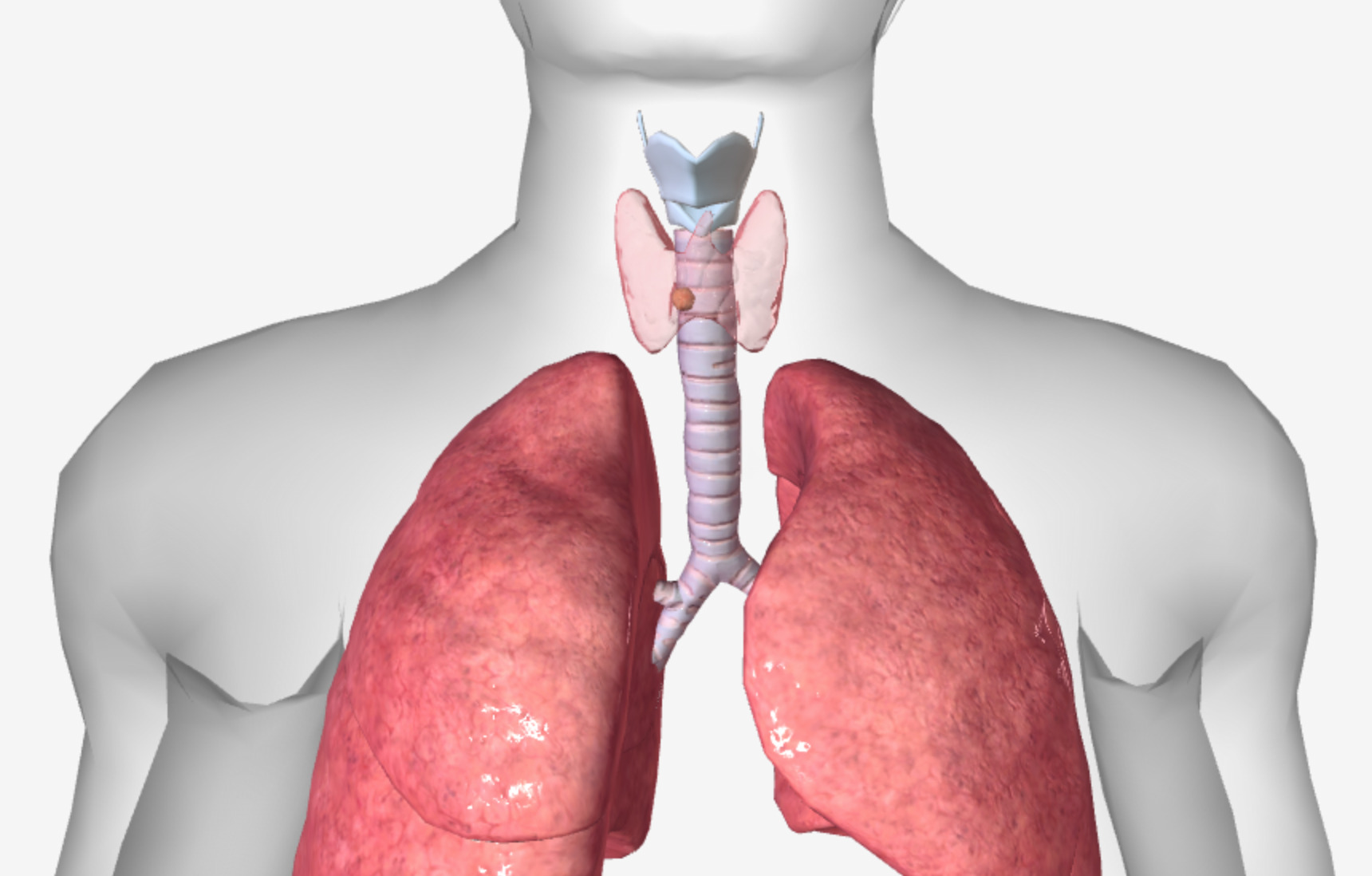Playlist
Show Playlist
Hide Playlist
Thyroid Adenomas and Thyroid Carcinomas
-
Slides ThyroidCancer EndocrinePathology.pdf
-
Reference List Pathology.pdf
-
Download Lecture Overview
00:01 Let’s take a look at all the different times in which you want to worry about thyroid cancer in your patient. 00:06 First, take a look at adenomas, then we actually will take a look at the carcinomas and when, as I told you, it becomes relevant. 00:17 Let’s take a look at the risk factors of thyroid cancer. 00:20 Incidence of 3 per 100,000 per year. 00:25 Ionizing radiation, genetic factors are pretty big, big risk factors for thyroid cancer. 00:31 A picture here, do not be afraid. 00:36 We have dealt with this or we have dealt with parts of this that are quite important to you in neoplasia. 00:42 However, in thyroid cancer, let us focus upon the RET that you see here in your box. 00:50 The RET proto-oncogene is specific for a type of thyroid cancer that you want to know of and that is going to be medullar cancer of the thyroid which is then seen as being part of a component of MEN 2A and 2B; not the most common thyroid cancer, is it? No. 01:10 Encodes for receptor tyrosine kinase, the things that you’ve seen before. 01:17 Just to make sure that we put things into perspective is the left branch here. 01:22 You’ve dealt with RAAS before. 01:25 And with RAAS, at some point in time, you’ll be focusing about… will be focusing upon follicular cancer of the thyroid. 01:34 Follicular cancer of the thyroid, not follicular lymphoma; that’s translocation. 01:39 14,18 bcl-2 has nothing to do with follicular cancer of the thyroid. 01:45 So, I need you to be familiar with what I’m referring to here… HRAS. 01:49 Now, with RAAS, we already know about RAAS, so is it with GTP, so is it with RAF and MEK and such. 01:59 Then you get on into tumour suppressor genes including P15 and especially P16. 02:05 In this wonderful picture that you should not be afraid for, in fact, you’re welcoming this into your heart, ha! We have our papillary cancer of the thyroid that’s the most common and that’s BRAF, BRAF is a big one for us… BRAF associated with melanoma, you know about the drug called vemurafenib. 02:24 Put things into perspective looking at three different types of thyroid cancers with genetic propensity. 02:33 Worrisome factors for thyroid cancer: solitary nodules, nodules in younger patients, nodules in males, radiation exposure and those nodules are cold; risk factors and when you would be worried about your patient possibly coming back positive for thyroid cancer. 02:52 Remember papillary, medullary, follicular type of thyroid cancers, but all be cold nodules. 03:00 Keep that in mind. 03:03 Thyroid cancer here further we’ll take you through a really nice map here. 03:11 Our focus and we’ve dealt with this plenty of time, we have seen this repeatedly and every time I show it to you, hopefully you have a better understanding of what’s going on with the entire integration of molecular pathology, which is the future of medicine, isn’t it really? So, once again, RET thyroid, MEN 2a and 2b is all that I wish for you to focus upon here and the rest of these is your RAAS, BRAF, MEK, mitogen activated protein… all of these also responsible for communicating with the nucleus so that you increase your transcription, increase cell cycle within the nucleus so that the cell is eternal and never dies. 03:58 Welcome to neoplasia and specifically here dealing with thyroid cancer. 04:03 What’s the one with RET? Medullary cancer of thyroid. 04:06 What’s the one with papillary cancer of the thyroid? BRAF. 04:09 What’s the one with follicular? Good, the one with follicular that we saw was HRAS. 04:16 Thyroid cancer: 3 per 100,000… I wish to say that over and over again… ionizing radiation, the RET with medullary. 04:25 Do not forget about how it’s responsible for encoding for RTK which stands for receptor tyrosine kinase. 04:34 Our topic now brings us to thyroid adenomas. 04:37 Adenomas… discrete, solitary masses. 04:40 Take a look at the picture that we see on the right and that is a well capsulated solitary mass known as an adenoma. 04:47 Variety of histologic patterns, however, the key feature will be the… well, circumscribed capsule with no invasion, an adenoma. 04:57 Adenoma, benign or malignant? Benign, benign, benign. 05:01 The Gain-of-function type of issue with TSH receptor or an alpha subunit what’s known as a Gs. 05:06 If I were you, I’d know the gene known as GNAS… very important, you’ll see that a couple of times. 05:16 Must be differentiated from follicular carcinoma, why? Because anginvasive versus lymphoinvasive and I will harp on that when the time is right. 05:25 Present as painless mass, an adenoma is; usually non-functional, that’s important. 05:31 Larger masses can produce local obstruction. 05:35 Once again, compression of the esophagus or the trachea resulting in dysphagia or dyspnoea respectively. 05:45 Let’s now move into carcinomas of the thyroid. 05:47 Most commonly in adults by far the most common… Chernobyl, the atomic explosions in the Far East and in Japan. 05:58 All of that, all those patients decades and decades… 50 years after Chernobyl what we can expect with atomic explosion exposure is this cancer, papillary cancer of the thyroid. 06:15 We’ll talk about this in great detail. 06:16 Make sure you know everything about papillary that I will tell you. 06:18 Follicular is the second most common. 06:24 Look at this, the discrepancy between 75 or 85 percent and a far distant second at 10 to 20 percent of your thyroid cancer is follicular. 06:33 Medullary, a measly 5 percent, but why do you need to know it so well? Because it’s part of MEN 2a and 2b, then you have a measly less than 5 percent for anaplastic, thank goodness, because things-things become a lot more dangerous when it gets into anaplastic and then you would have lymphoma of the thyroid. 06:53 Oftentimes, you might be thinking about autoimmune diseases and here, Hashimoto may give rise to lymphoma type of picture with thyroid.
About the Lecture
The lecture Thyroid Adenomas and Thyroid Carcinomas by Carlo Raj, MD is from the course Thyroid Gland Disorders.
Included Quiz Questions
What is associated with medullary thyroid carcinoma?
- RET proto-oncogene mutation
- EFGR mutation
- HRAS mutation
- B-RAF mutation
- GTPase mutation
What is NOT a concerning sign of malignancy in a thyroid nodule?
- Presence of "hot" nodules
- Male gender
- Pediatric patient
- Solitary nodule
- History of significant radiation exposure
What is NOT a characteristic associated with a thyroid adenoma?
- Non-homogenous histological features
- Well-circumscribed capsule
- Solitary
- Gain of function of TSH receptor
- No invasion
What is the most common thyroid carcinoma?
- Papillary
- Medullary
- Follicular
- Anaplastic
- Lymphoma
Customer reviews
5,0 of 5 stars
| 5 Stars |
|
5 |
| 4 Stars |
|
0 |
| 3 Stars |
|
0 |
| 2 Stars |
|
0 |
| 1 Star |
|
0 |





